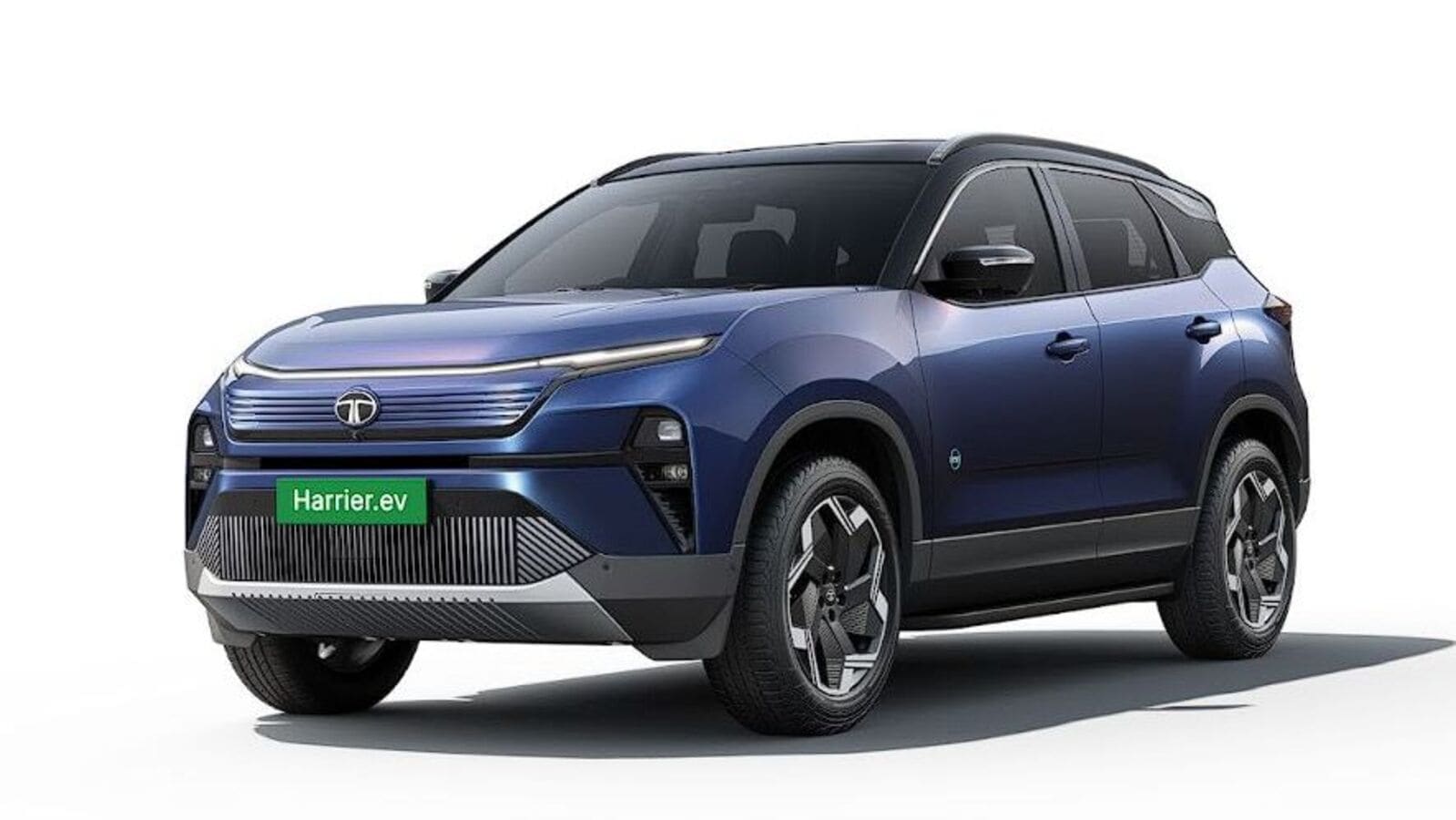05 June 2025

New car registrations in Germany returned to growth in May, as electric vehicles (EVs) propelled the market forward. Could new battery-electric vehicle (BEV) tax incentives provide an extra boost? Tom Hooker, Autovista24 journalist, reviews the latest figures.
A total of 239,297 new cars took to German roads in May, an increase of 1.2% year on year. This was an improvement of just 2,872 units from one year prior. It marks the first time the market has enjoyed growth since October 2024.
According to the figures provided by the KBA, private registrations grew by 2.4% and represented 32.8% of overall deliveries. Meanwhile, the commercial sector increased volumes by 0.7% last month, taking a 67.1% market share.
However, new-car deliveries were still down by 2.4% in the year to date, reaching just under 1.15 million units.
‘The slightly positive development in new registrations gives hope for a recovery of an overall market that was still below the previous year’s level,’ commented VDIK president Imelda Labbé.
Germany’s production in peril?
However, hope of a recovery may be threatened by production disruptions. China has placed export restrictions on rare earth magnets that are widely used within the automotive industry. This could disrupt, or even halt, German car production, said VDA president Hildegard Müller in a statement to Reuters.
A few rare earth producers, including Volkswagen’s suppliers, have been issued permits by China. However, this is not enough to ensure the adequate supply of components needed for smooth production.
Mercedes-Benz is talking to suppliers about building a rare-earth stockpile, according to Reuters. Carmakers, diplomats and other executives from Europe are seeking meetings with Beijing officials to lobby for faster approvals of rare earth magnet exports.
BEV growth drives market
Registrations of BEVs soared in May, rising by 44.9% to 43,060 units. This marks five months of consecutive double-digit growth for the technology. Excluding BEVs from the overall market results in a drop of 5.1%. The powertrain accounted for 18% of deliveries last month, up 5.4 percentage points (pp) compared to May 2024.
‘A total of 201,563 BEVs were delivered from January to May, equating to an impressive registration improvement of 43.2% year on year. This corresponded to a market share of 17.6%,’ outlined Robert Madas Autovista Group’s regional head of valuations.
Government’s investment boost
The German government has launched a package of tax breaks for companies, in an effort to stimulate investment. Included in the package is a special depreciation allowance for BEVs purchased between July 2025 and December 2027.
Companies buying a new BEV will enjoy a depreciation allowance of 75% in the first year of purchase, wrote electrive. 10% could be deducted in the following year and 5% in the second and third years. The allowance would be 3% in the fourth year and 2% in the fifth year.
‘The draft law of the immediate investment program gives important signals for investments in electromobility. The planned tax incentives for the promotion of BEVs can provide valuable and sustainable impetus for the market development of e-mobility,’ stated Müller.
‘Above all, the planned 75% depreciation in the year of purchase of a BEV used for business purposes can provide effective support here,’ she said.
The VDIK called for plug-in hybrids (PHEVs) to be included in the measure. Meanwhile, other industry figures noted that the incentive may not provide a dramatic improvement.
‘The depreciation options of this investment impulse for electromobility are limited in their effect. They only benefit those who can actually use them for tax purposes. Private households or leasing companies, for example, do not benefit,’ outlined acting president of the ZDK Thomas Peckruhn.
‘All in all, it is a measure that does not do any harm but also does not bring any drastic improvement. It’s a first step, but nothing more,’ he said.
Labbé shared a similar opinion. ‘We see the investment program as a first strong step towards boosting the German economy. However, this tax measure does not achieve enough for the ramp-up of electric mobility,’ she commented.
‘This is because it addresses only the commercial business and even there not the leasing business, which accounts for the majority of registrations,’ Labbé added.
Further tax incentives
Furthermore, the gross price limit for EVs as company cars will be increased from €70,000 to €100,000 for the taxation of company cars at 0.25%.
‘We also see the increase in the cap on the gross list price for company car taxation for BEVs as positive. Company cars are an important driver of e-mobility in Germany,’ noted Müller.
‘The measure will also strengthen the used-car market for BEVs because company cars will be available as used cars at a low price after the leasing period has expired,’ she highlighted.
In their response to the announcement, industry bodies also called for further incentives to boost EV sales.
‘We urgently need cheaper charging electricity prices, for example by reducing taxes on electricity to the European minimum rate and significantly reducing grid fees. The public charging infrastructure must also be further expanded, and bureaucratic hurdles in the construction of private charging points must be removed,’ stated Peckruhn.
‘In the VDA’s view, the general tax framework for the leasing of EVs should be improved. It is also important to note that the coalition partners must now promptly initiate the extension of the current motor vehicle tax exemption for EVs until 2035, which they agreed on in the coalition agreement,’ explained Müller.
PHEV market surges
Despite BEV’s strong improvement, it was PHEVs that were the best-performing powertrain in May.
Registrations of the powertrain surged 79.4%, its biggest increase since December 2022. The result also continues its streak of double-digit growth so far this year. Its total of 25,181 deliveries gave it a 10.5% market share, up 4.6pp year on year.
Across the first five months of 2025, the technology enjoyed a 52.8% rise in volumes, reaching 113,287 units. It represented 9.9% of the new-car market, up from 6.3%. However, apart from the small volume ‘others’ category, it is still comfortably the least popular powertrain in Germany.
EVs on a charge
Combining BEV and PHEV delivery totals, the EV market saw a 56% improvement in registrations. A total of 68,241 new models were handed over to customers, delivering 24,495 more units than May 2024. This was the biggest monthly plug-in increase since August 2023.
Excluding EVs from the German new-car market would have resulted in a wider decline of 11.2%. The powertrain grouping captured 28.5% of overall volumes last month, up 10pp year on year.
EVs recorded growth of 46.5% in the year to date, with 314,860 units. This translated to a 27.5% share, up from 18.3%. In comparison, during the first five months of 2024, plug-in deliveries slumped by 6.7%.
‘The decline in subsidies for electric cars at the end of 2023 initially led to a slump in the first months of 2024. However, the recovery so far in 2025 shows that the market is increasingly developing independently of subsidies,’ highlighted Madas.
More budget EVs
Driving this improvement is a growing selection of budget EVs and a consistent rise in charging infrastructure.
For example, there are currently 9.1% more AC charging points available in Germany than at the end of June 2024. This is according to the latest figures from the European Alternative Fuels Observatory (EAFO). Meanwhile, the number of DC charging points surged by 29.6%.
‘The transition to electric mobility is accelerating. The growing portfolio of cheaper EVs and the increasing number of public charging points are positive,’ explained Peckruhn. ‘The reservations among private customers about buying an EV have decreased noticeably, we observe this in daily trading.
‘If manufacturers now announce their new releases for the coming year, especially in the compact and small car segments with appropriate pricing, this positive development could be promoted even further,’ he stated.
Petrol market continues decline
The petrol market continued its decline in 2025, enduring a 24.1% fall in May with 67,921 registrations. The fuel type has still yet to record growth this year. Petrol-powered cars accounted for 28.4% of the new-car market, down 9.5pp compared to one year prior.
From January to May, the powertrain saw a 26.1% drop in deliveries to 324,418 units. Removing petrol cars from the overall figure in the year to date would have resulted in growth of 11.8%. Petrol-powered cars took a 28.3% market share, down from 37.4%.
Diesel suffered a 21.8% decline last month, with 35,106 units, marking its sixth consecutive monthly drop. The fuel type made up 14.7% of total volumes in May, down 4.3pp compared to May 2024. This was also its lowest share so far this year.
In the year to date, a total of 175,717 diesel models have taken to the road, a decrease of 21.1%. This gave it a 15.3% market share, down from 19% during the first five months of last year.
Combining petrol and diesel registrations, the internal-combustion market (ICE) market fell by 23.3% in May, posting 103,027 units. The powertrain grouping recorded double-digit declines of at least 20% in every month so far this year.
ICE models represented 43.1% of the market, down 13.7pp compared to 12 months prior. This was its largest loss in share since December 2022. In the year to date, the powertrain grouping slumped by 24.4%, with 500,135 registrations. It took a 43.6% share across the first five months of the year, down from 56.3%.
Help from hybrids
Hybrids, including both full and mild hybrid powertrains, enjoyed a 16.7% rise in deliveries in May. This was the biggest increase for the technology in 2025 so far. It also represents its ninth month of consecutive growth.
A total of 66,990 hybrids were handed over to customers last month, holding a 28% share. This was 3.7pp ahead of its market hold in May 2024. However, it was also the first time hybrids had fallen back behind petrol’s share since January.
Across the first five months of the year, hybrids recorded 326,634 deliveries, an improvement of 12.1% compared to the same period in 2024. It accounted for 28.5% of the overall registration total, up from 24.8%.
Adding hybrid volumes to the EV figures, the electrified market grew by 33.7% last month, reaching 135,231 units. The category represented 56.5% of total deliveries in May, up from 42.8%. From January to May, the electrified market surged by 26.7% to 641,494 units.
According to Autovista24 calculations, the ‘others’ category saw deliveries improve by 18.7% in May, posting 1,039 units. This gave it a 0.4% market share, stable from 12 months prior.
Across the first five months of the year, a total of 4,936 models with an alternative powertrain took to Germany’s roads, down 25% compared to the same period last year. The category captured 0.4% of the market, down from 0.6%.





